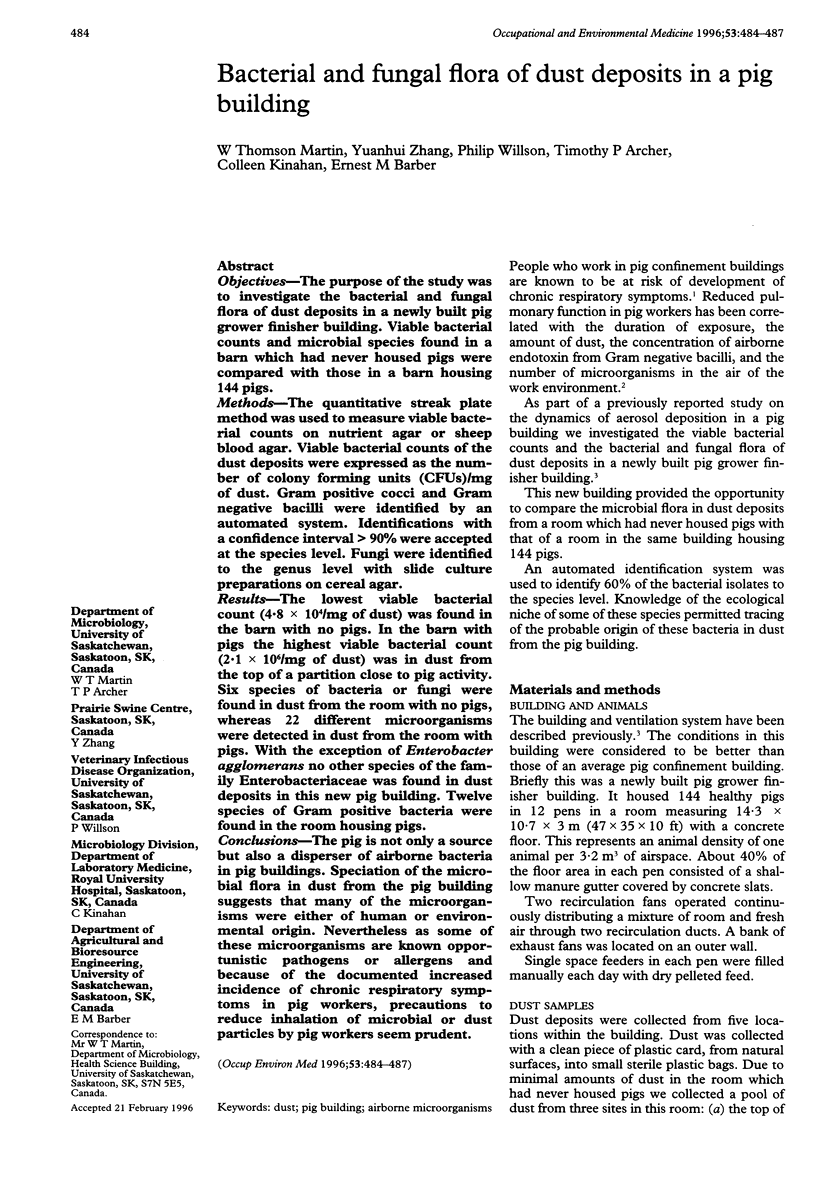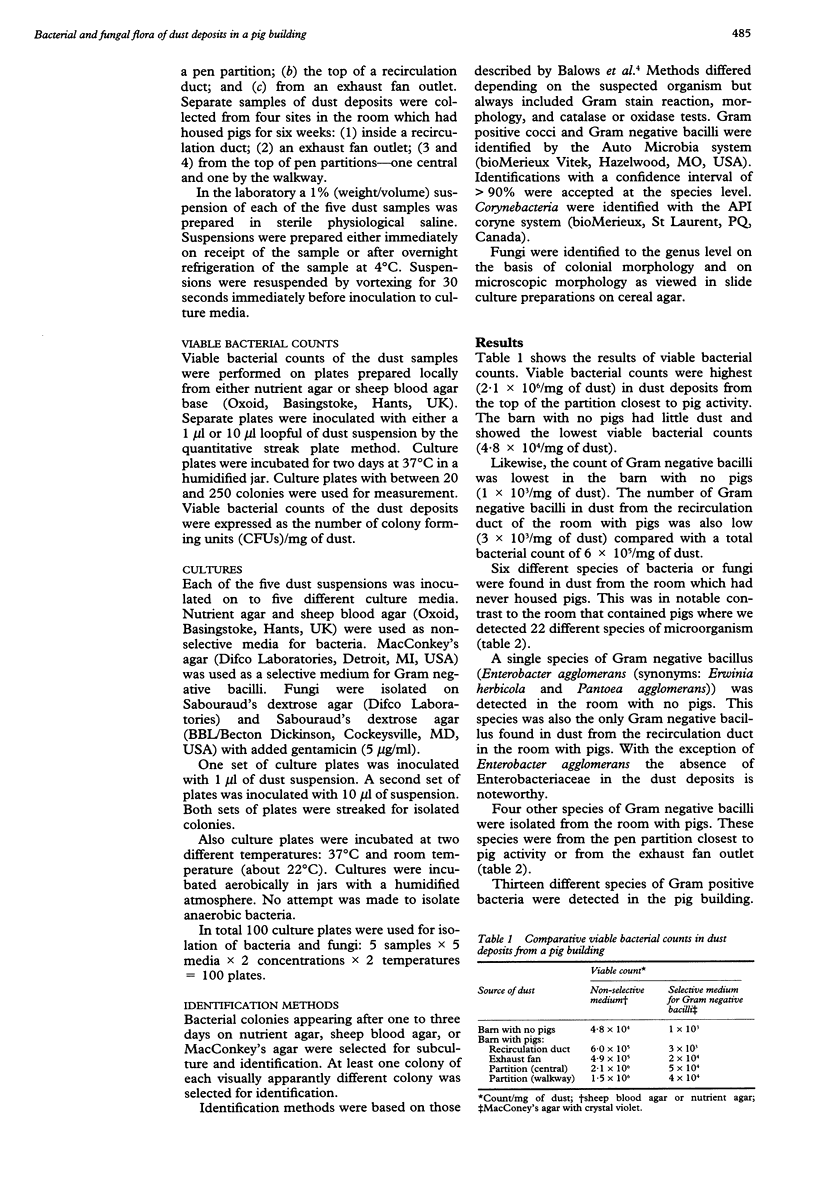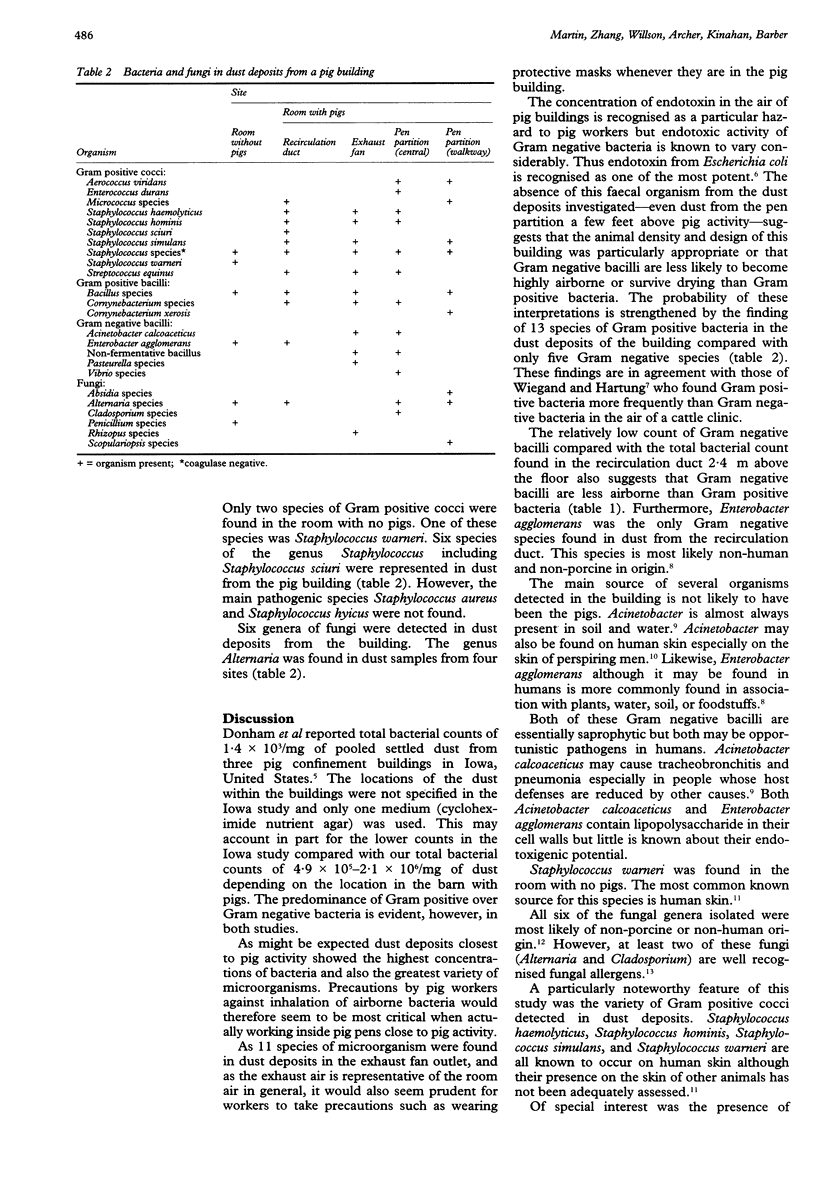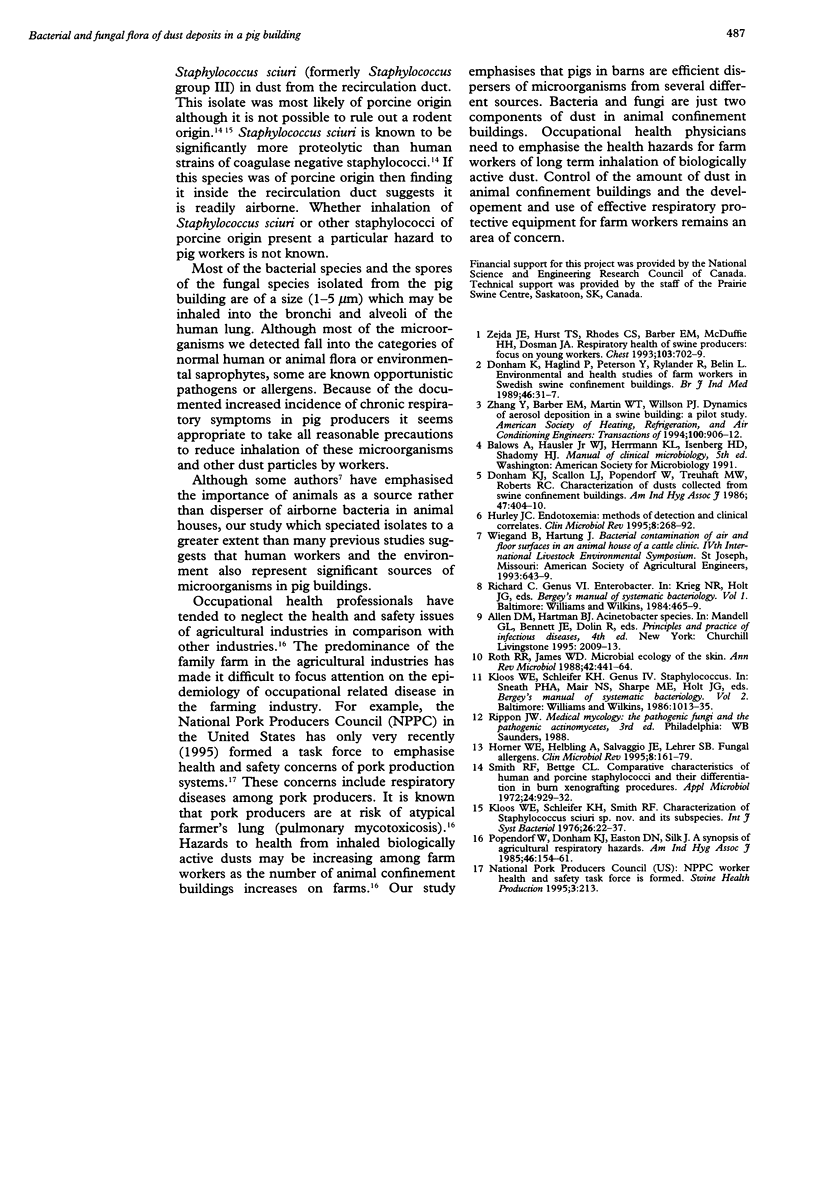Abstract
OBJECTIVE--The purpose of the study was to investigate the bacterial and fungal flora of dust deposits in a newly built pig grower finisher building. Viable bacterial counts and microbial species found in a barn which had never housed pigs were compared with those in a barn housing 144 pigs. METHODS--The quantitative streak plate method was used to measure viable bacterial counts on nutrient agar or sheep blood agar. Viable bacterial counts of the dust deposits were expressed as the number of colony forming units (CFUs)/mg of dust. Gram positive cocci and Gram negative bacilli were identified by an automated system. Identifications with a confidence interval > 90% were accepted at the species level. Fungi were identified to the genus level with slide culture preparations on cereal agar. RESULTS--The lowest viable bacterial count (4.8 x 10(4)/mg of dust) was found in the barn with no pigs. In the barn with pigs the highest viable bacterial count (2.1 x 10(6)/mg of dust) was in dust from the top of a partition close to pig activity. Six species of bacteria or fungi were found in dust from the room with no pigs, whereas 22 different microorganisms were detected in dust from the room with pigs. With the exception of Enterobacter agglomerans no other species of the family Enterobacteriaceae was found in dust deposits in this new pig building. Twelve species of Gram positive bacteria were found in the room housing pigs. CONCLUSIONS--The pig is not only a source but also a disperser of airborne bacteria in pig buildings. Speciation of the microbial flora in dust from the pig building suggests that many of the microorganisms were either of human or environmental origin. Nevertheless as some of these microorganisms are known opportunistic pathogens or allergens and because of the documented increased incidence of chronic respiratory symptoms in pig workers, precautions to reduce inhalation of microbial or dust particles by pig workers seem prudent.
Full text
PDF



Selected References
These references are in PubMed. This may not be the complete list of references from this article.
- Donham K. J., Scallon L. J., Popendorf W., Treuhaft M. W., Roberts R. C. Characterization of dusts collected from swine confinement buildings. Am Ind Hyg Assoc J. 1986 Jul;47(7):404–410. doi: 10.1080/15298668691389955. [DOI] [PubMed] [Google Scholar]
- Horner W. E., Helbling A., Salvaggio J. E., Lehrer S. B. Fungal allergens. Clin Microbiol Rev. 1995 Apr;8(2):161–179. doi: 10.1128/cmr.8.2.161. [DOI] [PMC free article] [PubMed] [Google Scholar]
- Hurley J. C. Endotoxemia: methods of detection and clinical correlates. Clin Microbiol Rev. 1995 Apr;8(2):268–292. doi: 10.1128/cmr.8.2.268. [DOI] [PMC free article] [PubMed] [Google Scholar]
- Popendorf W., Donham K. J., Easton D. N., Silk J. A synopsis of agricultural respiratory hazards. Am Ind Hyg Assoc J. 1985 Mar;46(3):154–161. doi: 10.1080/15298668591394572. [DOI] [PubMed] [Google Scholar]
- Roth R. R., James W. D. Microbial ecology of the skin. Annu Rev Microbiol. 1988;42:441–464. doi: 10.1146/annurev.mi.42.100188.002301. [DOI] [PubMed] [Google Scholar]
- Smith R. F., Bettge C. L. Comparative characteristics of human and porcine staphylococci and their differentiation in burn xenografting procedures. Appl Microbiol. 1972 Dec;24(6):929–932. doi: 10.1128/am.24.6.929-932.1972. [DOI] [PMC free article] [PubMed] [Google Scholar]
- Zejda J. E., Hurst T. S., Rhodes C. S., Barber E. M., McDuffie H. H., Dosman J. A. Respiratory health of swine producers. Focus on young workers. Chest. 1993 Mar;103(3):702–709. doi: 10.1378/chest.103.3.702. [DOI] [PubMed] [Google Scholar]


